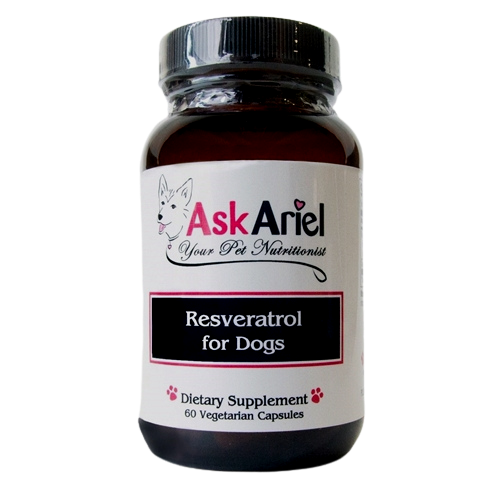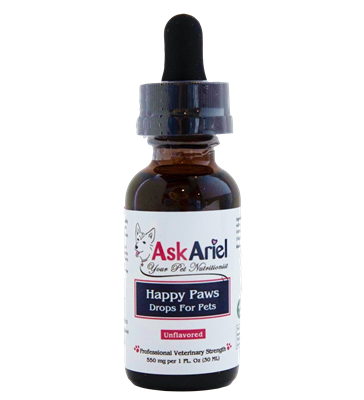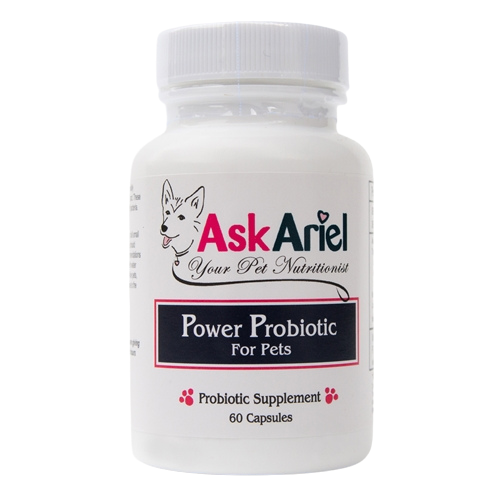Natural Canine Lyme Disease Treatment
Natural Treatments For Tick Diseases In Dogs
Need Help? Contact Us At [email protected]
Did you find a tick on your dog? We hear so much about the dangers of a tick bite in dogs, but thankfully only a small fraction of ticks actually carry the borrelia bacteria that causes Lyme disease. Lyme Disease in dogs will affect your pup differently than humans. Many dogs with Lyme disease do not show any symptoms. However, symptoms may include joint pain, inappetence, fever and lethargy. Tick-borne illnesses, like Lyme disease, ehrlichiosis and anaplasmosis, can become very serious. Canine Lyme disease treatment will include antibiotics (often doxycycline) from your veterinarian. Natural Lyme Lyme disease treatment for dogs includes feeding a highly nutritious diet (raw frozen preferred, high in omega 3s with plenty of assorted vegetables) and supplements in conjunction with medications from your vet
 Resveratrol For Dogs - Resveratrol For Dogs contains Japanese knotweed root, an antioxidant with anti-microbial, anti-inflammatory and cardioprotective properties. Resveratrol can increase circulation, especially to the heart and joints, making it one of the most effective natural remedies for Lyme Disease in dogs. The increase in circulation improves blood flow into areas where the bacteria can hide. Since systemic, chronic inflammation is a hallmark characteristic of this condition, the properties found in Ask Ariel’s Resveratrol make it one of the best supplements for treating Lyme Disease in dogs. Researchers from the Johns Hopkins Bloomberg School of Public Health tested the effectiveness of plant-based extracts in the treatment of Lyme Disease. Japanese knotweed was one of the top two most effective in killing off Lyme bacteria.* Resveratrol For Dogs - Resveratrol For Dogs contains Japanese knotweed root, an antioxidant with anti-microbial, anti-inflammatory and cardioprotective properties. Resveratrol can increase circulation, especially to the heart and joints, making it one of the most effective natural remedies for Lyme Disease in dogs. The increase in circulation improves blood flow into areas where the bacteria can hide. Since systemic, chronic inflammation is a hallmark characteristic of this condition, the properties found in Ask Ariel’s Resveratrol make it one of the best supplements for treating Lyme Disease in dogs. Researchers from the Johns Hopkins Bloomberg School of Public Health tested the effectiveness of plant-based extracts in the treatment of Lyme Disease. Japanese knotweed was one of the top two most effective in killing off Lyme bacteria.*
*Reference: Research Article. Frontiers in Medicine. 21 February 2020. Evaluation of Natural and Botanical Medicines for Activity Against Growing and Non-growing Forms of B. burgdorferi. Jie Feng, Jacob Leone, Sunjya Schweig and Ying Zhang.

Happy Paws Drops - Tick-borne illnesses can cause stiffness and inflammation, resulting in limping or lameness. Happy Paws Organic Hemp Extract helps to relieve the joint pain and inflammation associated with Lyme disease. For comprehensive anti-inflammatory joint support, use Happy Paws Drops along with supplements such as K9 CurcuMagic and ArthroSoothe For Dogs. Many pet owners are able to reduce or eliminate the amount of NSAIDs and pain medications needed upon using these holistic remedies.
.png)
Olive Leaf Extract - Olive Leaf contains up to 30 powerful polyphenols that have antimicrobial activity against a wide variety of bacteria. Scientific research has found that these compounds work synergistically to provide exceptional antioxidant and immune-supportive properties. The polyphenol oleuropein has been tested in clinical trials and found to be an exceptional antibacterial and antifungal supplement. Because of its antibacterial and immune boosting properties, olive leaf extract lyme disease and human holistic treatment protocols have been routinely intertwined.
 Ultra-Flex Collagen - Ask Ariel's Ultra-Flex Collagen is a natural “whole-food” supplement that can provide great pain relief for Lyme disease in dogs. Collagen is the cellular glue that holds together the bones, muscles, skin, tendons and digestive tract of your dog. The Borrelia burgdorferi bacterium present in Lyme disease has the ability to break down collagen. Lyme disease symptoms such as jont pain and inflammation occur at locations where the collagen has been compromised. Ultra-Flex Collagen can give your dog powerful joint support and increase elasticity and stability in the joints and connective tissue. Ultra-Flex Collagen - Ask Ariel's Ultra-Flex Collagen is a natural “whole-food” supplement that can provide great pain relief for Lyme disease in dogs. Collagen is the cellular glue that holds together the bones, muscles, skin, tendons and digestive tract of your dog. The Borrelia burgdorferi bacterium present in Lyme disease has the ability to break down collagen. Lyme disease symptoms such as jont pain and inflammation occur at locations where the collagen has been compromised. Ultra-Flex Collagen can give your dog powerful joint support and increase elasticity and stability in the joints and connective tissue.
 Power Probiotic - This is the best probiotic for dogs with Lyme disease. Backed by scientific research, this powerful multi-strain formula promotes the growth of friendly bacteria that are essential to a healthy immune system. Probiotics support digestion, help fight infection and enhance overall immunity. Because canine Lyme Disease treatment involves antibiotics, it's important to replenish with the good bacteria that are killed off by the medication. These friendly flora are the core part of your pet's immune system. Most pets love the taste too. It’s safe and natural and contains NO FILLERS! Many dogs with Lyme will have anorexia (lack of appetite) and an upset tummy. Using Power Probiotic in conjunction with Soothing Digestive Relief can help to calm and soothe your dog's digestive tract. Power Probiotic - This is the best probiotic for dogs with Lyme disease. Backed by scientific research, this powerful multi-strain formula promotes the growth of friendly bacteria that are essential to a healthy immune system. Probiotics support digestion, help fight infection and enhance overall immunity. Because canine Lyme Disease treatment involves antibiotics, it's important to replenish with the good bacteria that are killed off by the medication. These friendly flora are the core part of your pet's immune system. Most pets love the taste too. It’s safe and natural and contains NO FILLERS! Many dogs with Lyme will have anorexia (lack of appetite) and an upset tummy. Using Power Probiotic in conjunction with Soothing Digestive Relief can help to calm and soothe your dog's digestive tract.
Know The Signs of Lyme Disease In Dogs
Symptoms of Lyme disease may not appear for months or even a year later. Dogs with ehrlichiosis and anaplasmosis tend to show symptoms sooner. These are the most common signs of tick-borne infectious diseases:
- Fever and lethargy
- Loss of appetite
- Swollen joints and limping
Ehrlichiosis in dogs can also cause difficulty breathing, bleeding disorders and neurological symptoms. Less common signs associated with anaplasmosis are vomiting and diarrhea.
What To Do if Your Pet Has Been Diagnosed With Lyme Disease or Ehrlichiosis
Treatments for tick-borne diseases in dogs should be a multipronged approach. While antibiotics may kill the bacteria, the disease can have a long-term impact on your pet's immune system and joints. It is important to use both conventional treatments from your veterinarian along with a a natural lyme disease treatment for dogs. This aftercare plan using natural supplements to support your dog's immune system will help reduce long-term inflammation and joint pain. While there isn't a natural cure for Lyme Disease in dogs, holistic remedies can greatly help relieve symptoms.

How Do Dogs Get Lyme Disease And How Does It Spread In Their Body?
Lyme Disease starts with a tick bite from the deer tick or black-legged tick. When the tick bites, the Lyme bacteria (Borrelia burgdorferi) enters your dog’s bloodstream. Not all ticks carry this bacteria. Your dog's white blood cells attempt to get rid of the bacteria, but the bacteria spreads throughout your dog’s tissues. The Borrelia bugdorferi infects the cells. As the bacteria spread, more and more cells are weakened. This constant stress on the immune system throws it off balance, resulting in symptoms and chronic inflammation. Traditional veterinary treatment for Lyme disease in dogs usually involves a course of antibiotics for at least 30 days.
What Is Ehrlichiosis In Dogs?
Ehrlichiosis is another bacterial infection transmitted by ticks, usually the brown dog tick. The bacterium Ehrlichia canis is found mostly in the southeastern and southwestern US. Ehrlichiosis is divided into three stages: acute, sub-clinical (no outward signs) and chronic (long-term infection). Most dogs are diagnosed during the acute stage because of fever, swollen lymph nodes and inappetence. Ehrlichiosis can progress rather quickly to include respiratory distress, bleeding disorders (spontaneous bleeding) or neurological symptoms (such as loss of balance, head-tilting or walking in circles). Treatment for ehrlichiosis in dogs generally includes a course of antibiotics for at least 30 days. In some cases, steroid medications may also be prescribed.
What Is Anaplasmosis In Dogs?
Anaplasmosis phagocytophilum is a bacterium that is passed to dogs through tick bites. It is most commonly transmitted by the deer tick (or black-legged tick) and the western black-legged tick. Many dogs with anaplasmosis only show minor symptoms. A less common type of anaplasmosis cause by A. platys can cause thrombocytopenia, a low platelet count in the blood cells. Syptoms like bruising or bleeding can occur due to a lower clotting factor. The treatment for canine anaplasmosis is the same as that for other tick-borne infections. Many dogs are treated with a course of antibiotics for 2 weeks to a month.

Tips To Help Prevent Tick-Borne Infections in Dogs
- Keep grass mowed as short as possible. Keep leaves and garden debris picked up.
- Inspect your dogs (and yourself) after walks. Check carefully on your dog's paws, under the tail and around moist areas, such as the lips, eyes and ears.
- If you see a tick, remove it right away. Make sure you remove the entire tick. Tweezers can be very helpful.
- At your next visit, ask your groomer or veterinarian to check for ticks.
- Check with your veterinarian to see what vaccinations and/or flea & tick preventatives are recommended in your area.
|